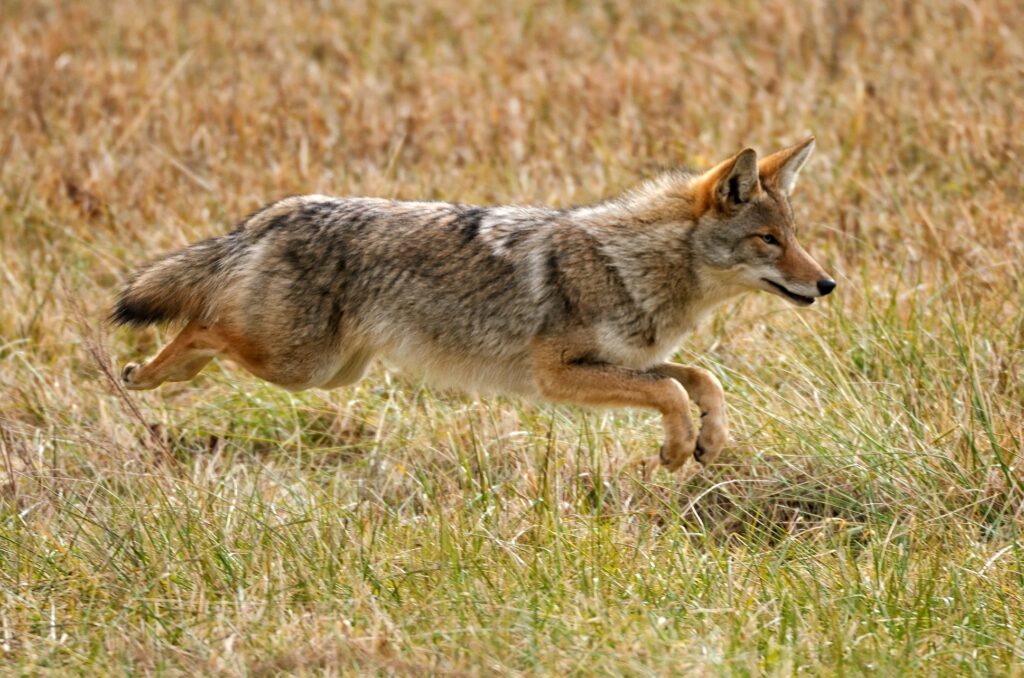Species Profile: Coyote, Fast Facts, Trivia, & Management Tips:

Species Profile: Coyote. The coyote appears often in Native American legends. Like real coyotes, mythological coyotes are typically notable for their crafty intelligence, stealth and voracious appetite. Other names include American jackal, brush wolf and prairie wolf.
The coyote (Canis latrans) is a member of the dog family. The scientific name literally means, “barking dog.” There are 19 subspecies. Its mournful howl is often joined by other coyotes creating a raucous concert of barks, yips, whines and howls. Historically, coyotes were most common on the Great Plains of North America. Highly adaptable to virtually any type of habitat, including urban and suburban areas, they have since extended their range from Central America, Mexico, to all of the US (except Hawaii), Canada and the Arctic.
Coyotes are generally given a bad rap by gamekeepers and hunters, and for good reason. These skilled predators will eat just about anything, including deer (especially fawns) turkeys (including eggs and poults), rabbits and other small game. Their omnivorous diet includes rodents, birds, insects, snakes, fish, frogs, crustaceans, fruits, vegetables, grass, trash, pet food and carrion. Pet owners and ranchers consider them destructive pests that will kill pets, calves, lambs, poultry or other livestock,
Coyote Control
Coyotes are listed on the IUCN (International Union for Conservation of Nature) Endangered Species List as “Least Concern” with populations increasing. For deer managers, yearly habitat assessment and trail camera surveys should be conducted to monitor the deer herd and fawn recruitment success. Lethal control methods are not a guarantee of increased fawn recruitment. When an area is vacated of coyotes, more will soon move in. Techniques must be employed each year to have an effect. These include calling & shooting, and/or DIY or professional trapping using leg-hold, cage traps or snares. Early spring control can be effective just before and after litter whelping when two generations can be eliminated. Short term control efforts should be focused just before and during fawn drop so that coyote numbers are lowest when fawns are most vulnerable, Check your local hunting and trapping regulations.
Did You Know the Coyote…
- Coyotes are known to hybridize with wolves (coywolf) and domestic dogs (coydog).

- A coyote can reach a top speed of 40 miles per hour.
- A coyote is an excellent swimmer, able to escape predators such as bears, wolves and cougars. This behavior allows them to reach and inhabit islands.
- In order to avoid detection by predators, a coyote sometimes walks on its toes to make as little noise as possible.
- The coyote’s life span in the wild can reach 10-12 years and 18-20 years in captivity.
- A coyote can jump horizontal distances of more than 12 feet when hunting prey.
- Coyotes are semi-social: they can be solitary, or form traveling pairs on packs.
Join our weekly newsletter or subscribe to GameKeepers Magazine.
Your source for information, equipment, know-how, deals, and discounts to help you get the most from every hard-earned moment in the field.










